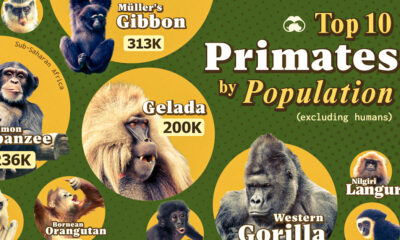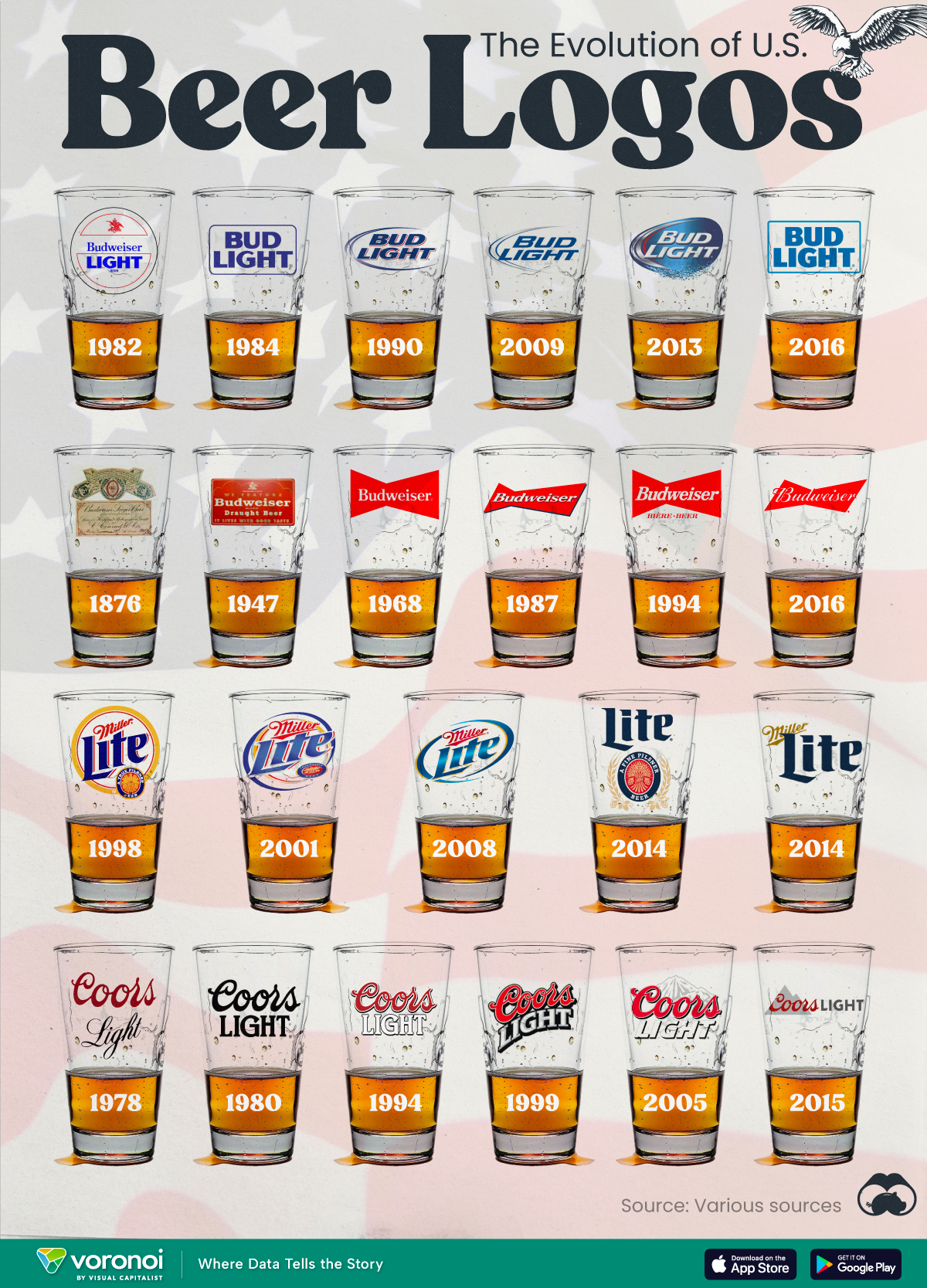Misc
Visualized: The 4 Billion Year Path of Human Evolution
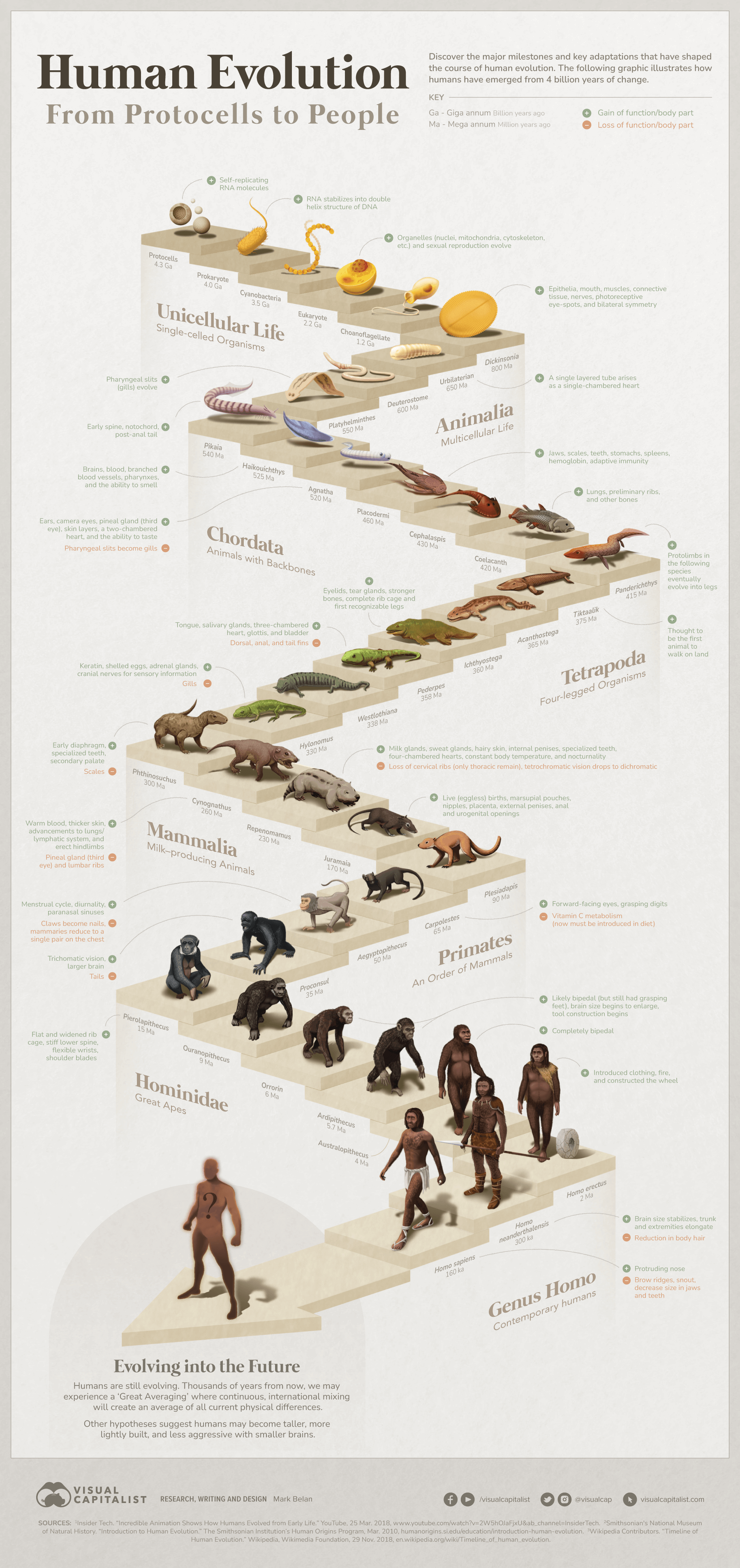
The 4 Billion Year Path of Human Evolution
The story of human evolution is a fascinating one, stretching back in an unbroken chain over millions of years.
From the tiniest protocells to modern humans, our species has undergone a remarkable journey of adaptation, innovation, and survival.
In this article, we take a look at the key developmental stages in the evolution of life on Earth that led to the emergence of Homo sapiens—us!
From Protocells to People
Evolution is the result of millions of minute mutations over millions of years, but the evolutionary process that created us can bucketed into a few key categories.
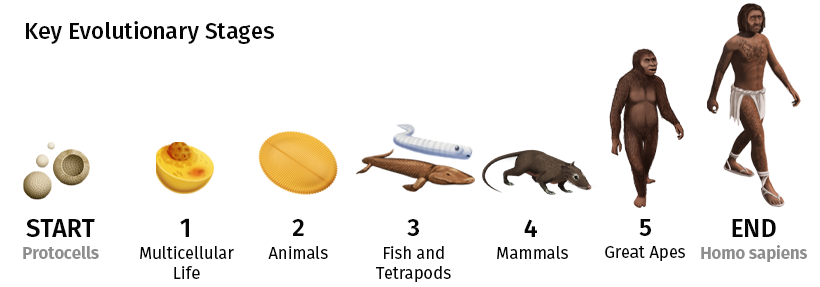
1. Protocells and Early Microorganisms
The first life forms on Earth were simple, single-celled microorganisms known as protocells. These precursor cells lacked a nucleus or other membrane-bound organelles, and they had simple genetic proteins called RNA.
Over time, RNA complexified into the more stable DNA. Protocells slowly developed specialized organelles, becoming more complex microbes that would eventually form eukaryotes – the complex, unicellular organisms that would birth a diverse array of life forms, from simple sponges to complex animals.
2. The First Animals
Dickinsonia is the earliest example of an animal we know of. Though it was a simple, flat creature that lacked a mouth or digestive system, it symbolizes the first multicellular organism of substantial complexity.
Over time, the first sophisticated organ systems began to arise. Bilateral symmetry emerged, as well as early versions of the nervous and circulatory systems. Simple eyes, called eyespots, also appeared around the time that spinal cords and vertebrate creatures began to emerge.
3. Fish and Tetrapods
One of the most significant developments in the evolution of life was the transition from marine to terrestrial environments.
Up until 500 million years ago, all life was sequestered in the sea. Fish were the first vertebrates and introduced additional organs like stomachs, spleens, and body components like scales, teeth, blood, and more. Bony fish arose, and over time their development brought about sophisticated changes to the skeletal system, eventually producing “proto-limbs” that would enable organisms to walk on land.
Researchers are still unsure which specific organism might have first crawled on land, but candidates share these pre-limb characteristics. Tiktaalik is one popular candidate because it had specialized bones that suggest it could support its own weight while moving out of shallow waters.
These creatures eventually became the tetrapods (“four-footed”), and they had features like four-legs, a backbone, and lungs which could absorb oxygen from air. All the amphibians, reptiles, birds, and mammals that followed are descendants of the original tetrapods.
4. The First Mammals
Around 200 million years ago, the first mammals emerged. These early mammals were small, shrew-like creatures that lived alongside the dinosaurs. Over time, however, mammals evolved hair, specialized teeth, sweat glands to regulate body temperature, and a more efficient circulatory system.
Mammals also brought about features like nocturnality, mammary glands, external genitalia, and a variety of other features that distinguished them from other living species at the time, like birds or reptiles.
5. The Great Apes and First Homo Species
Around 7 million years ago, the first great apes emerged in Africa. These apes, such as orangutans, gorillas, and chimpanzees, were highly intelligent and social creatures that lived in complex communities. Over time, one lineage of apes would give rise to the first members of the genus Homo, which includes our own species.
The main developmental changes during this time were the full-time bipedalism of apes, increasing brain size, and advanced bone development that enabled dexterity for tool construction and hunting. Inventions like fire and clothing arose early in the Homo genus, and eventually complex language, hair loss, and dramatic facial changes would evolve.
Researchers struggle with resolving the exact progression of the Homo species. Many Homo species existed at the same time, and since many fossil records overlap, resolving which ones came first is an area of intense focus.
The Future of Human Evolution
As humans continue to evolve, we can expect to see significant changes in our physical and cognitive abilities over the next 10,000 years.
With the rise of technology and the increasing interconnectedness of the world, we may see a shift towards a more globalized and homogeneous human population, with less genetic diversity.
This has been described as “The Great Averaging”, where genetic diversity minimizes and we start to become more alike.
Other theories suggest that we might develop features like a taller, lighter build, with smaller brains and a less aggressive personality.
However, as with all evolution, these changes will be shaped by a complex interplay of genetic, environmental, and cultural factors. It is impossible to predict exactly how humans will evolve over the next 10,000 years, but one thing is certain: the future of human evolution will be shaped by the choices we make today.
Note: This is a complex topic with new research being published all the time. We’ll continue to dynamically update this graphic to reflect the most recent understanding of evolution.
Misc
The Evolution of U.S. Beer Logos
In this graphic, we analyze the evolution of popular U.S. beer logos like Budweiser, Coors Light, Bud Light, and more.
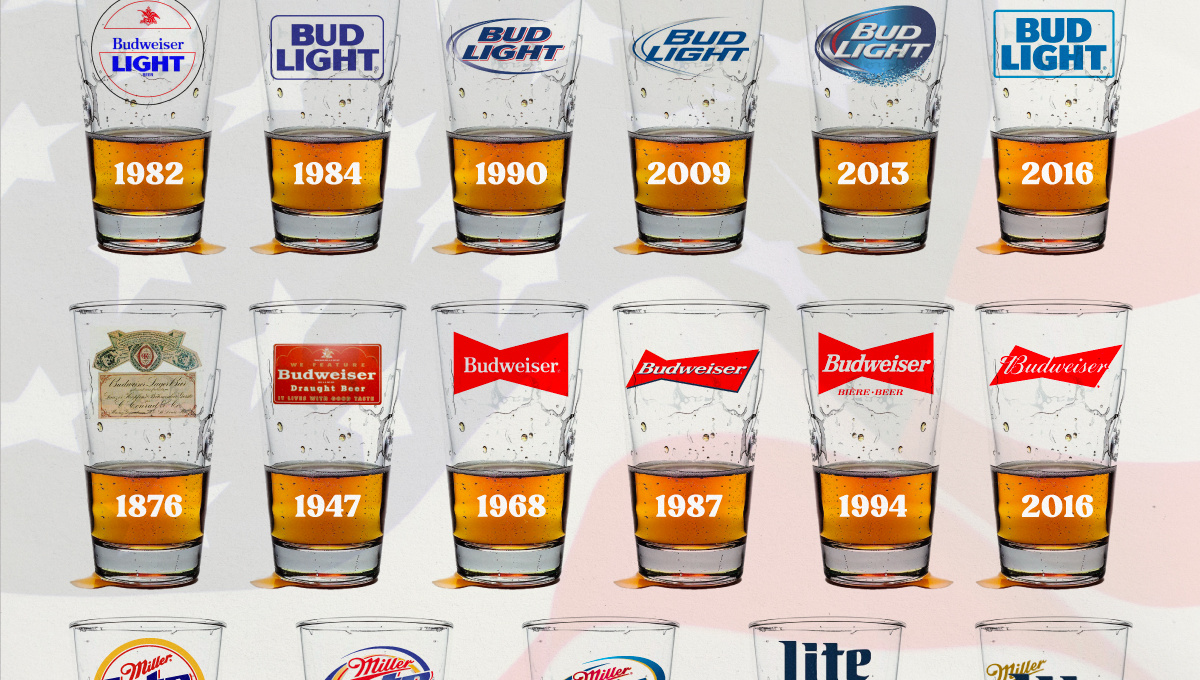
The Evolution of U.S. Beer Logos
This was originally posted on our Voronoi app. Download the app for free on iOS or Android and discover incredible data-driven charts from a variety of trusted sources.
Despite selling a popular product, beer companies have to be creative to stand out in a competitive market.
In this graphic, we analyze the evolution of some U.S. beer logos based on various sources. We chose brands based on a mixture of criteria, including popularity (based on YouGov surveys), availability of logo assets, and those with interesting developments.
Bud Light Back to the ’80s
Despite recent backlash and calls for a boycott after sending a commemorative can to transgender influencer Dylan Mulvaney, Bud Light remains one of America’s best-selling beers.
The brand of light beer, owned by the Anheuser-Busch company, has switched from its more circular logo with italic letters adopted in the 1990s back to the Bud Light badge of the 1980s. It is composed of heavy uppercase lettering, written in two levels in a shade of blue with the inscription placed on a solid white background and enclosed in a thin rectangular frame.
Miller Lite Goes Old School
After following a similar approach to Bud Light’s branding throughout the 2000s, Miller Lite decided to undergo a major rebranding in 2014.
The company returned to its 1970s roots, once again combining a white can with its original blue, gold, and red logo. The redesign was largely considered a success, given that Miller Lite sales immediately increased following the change.
A Symbol of American Brewing
The oldest brand on our U.S. beer list, the Budweiser logo, has undergone more than 15 changes over the years.
The design of two connected triangles represents a red bow tie, as a symbol of American brewing.
The colors of the Budweiser logo include a vibrant red, which helps the logo stand out and be easily recognizable from a distance. Studies also suggest that the color red stimulates appetite. Meanwhile, the white inscription symbolizes purity and cleanliness.
Curious to learn more about the beer market? Check out this graphic about global beer consumption.
-

 Economy7 days ago
Economy7 days agoRanked: The Top 20 Countries in Debt to China
-

 Demographics2 weeks ago
Demographics2 weeks agoThe Countries That Have Become Sadder Since 2010
-

 Money2 weeks ago
Money2 weeks agoCharted: Who Has Savings in This Economy?
-

 Technology2 weeks ago
Technology2 weeks agoVisualizing AI Patents by Country
-

 Economy2 weeks ago
Economy2 weeks agoEconomic Growth Forecasts for G7 and BRICS Countries in 2024
-

 Wealth2 weeks ago
Wealth2 weeks agoCharted: Which City Has the Most Billionaires in 2024?
-

 Technology1 week ago
Technology1 week agoAll of the Grants Given by the U.S. CHIPS Act
-

 Green1 week ago
Green1 week agoThe Carbon Footprint of Major Travel Methods





